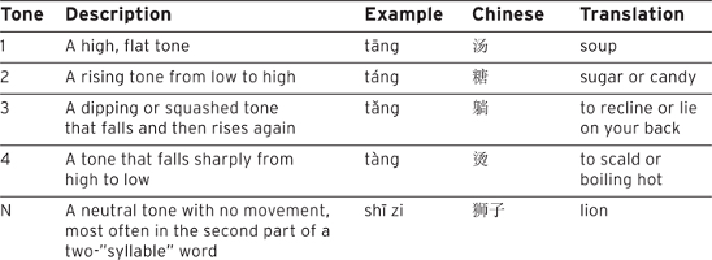Travel Reference
In-Depth Information
Mandarin Chinese is a tonal language, with four specific tones plus one neutral tone. This
means that one word can have up to five different pronunciations, which are at times im-
portant to get right for your own preservation of face. Some people argue that a beginner
shouldn't waste too much energy on learning tones, but in my own experience, if you put
more effort into thinking how a word should be pronounced you will learn it more deeply.
Plus, if you learn the correct pronunciation right from the start it sets a good foundation for
your Chinese and prevents the need to go back later on and try to undo bad habits. It will
also help your listeners understand you, as many locals do find it hard to make the jump in
meaning if your tone has gone walkabout.
Tones are represented as accents above the vowels in Pinyin, the romanization of the
Chinese characters. It's extremely important to learn how to correctly read Pinyin, the ro-
manized form of the Chinese characters, so that your pronunciation is intelligible. Some let-
ters, such as q or x, may not be pronounced as you think they should be, and if you try to say
a word that uses them, you could end up flummoxing your listener. Some guidebooks use
what may seem to be easier phonetic descriptions of words, but these are usually still way
off target and in the long term unhelpful, as no Chinese character that you see in Beijing
will be translated into anything other than standard Pinyin. Pinyin is easy to learn, and just
a couple of lessons with a teacher will have you reading it correctly even if you don't know
what you're saying.


